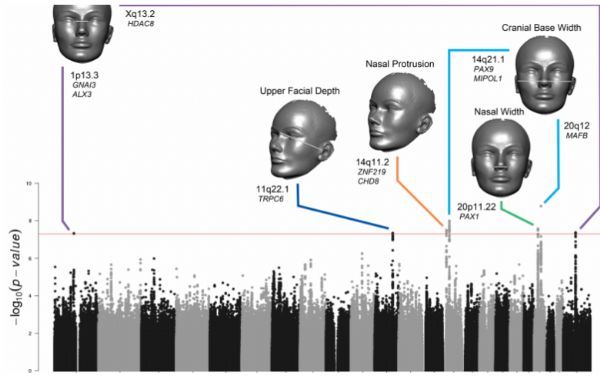Release date: 2016-08-29

Image source: medicalxpress.com
Many features make up the human face, such as the size of the nose and the width of the face, all of which stem from special genetic variations. Recently published in the research report of the international magazine PLoS Genetics , researchers from the University of Pittsburgh are right. This was studied in depth.
A number of research evidences suggest that a person's facial morphology is controlled by multiple genes in the body, but scientists are now unclear how these genetic mutations trigger the appearance of human faces; in order to identify these mutations, scientists have performed a genome-wide Affinity analysis analyzed 3D imaging of 3118 healthy individuals from European descent and analyzed the association between 20 facial features and approximately 1 million single nucleotide polymorphisms (SNPs) in the genome. The researchers found that the participant's face size, eye spacing, nose size, and distance between the lips and the glasses were statistically significantly associated with SNPs. In this study, the researchers also considered The results of two early genome-wide association studies confirmed the findings of previous studies.
The article's correspondent Seth Weinberg said that in this study we identified multiple genetic associations related to facial features that were not described in early genome-wide association studies. What is most exciting is that Sites associated with chromosomal regions contain known craniofacial function-related genes, such as such findings may clarify the important role of genes in facial formation, and will also help researchers understand the neonatal craniofacial birth defects s reason.
In the article, the researchers found that multiple gene regions that contribute to facial shape changes contain key genes important for facial development and facial deformities. Future researchers hope to identify genetic risk factors that trigger facial abnormalities, such as cleft lip and palate. . Finally, the researchers pointed out that this study only clarified some of the genes that affect the size and shape of human faces. Since many genes affecting facial morphology are likely to have smaller effects, it may be necessary to successfully map a large number of related gene maps. Large-capacity samples, and more sophisticated methods are needed to refine the facial features studied.
Source: Bio Valley
Cosmetics Products,Cosmeticghk-Cu Raw Powder,Copper Peptide,Ghk-Cu Powder Cosmetics
Shaanxi Hongbaiyi Biotech Co., Ltd. , https://www.sxhongbaiyi.com